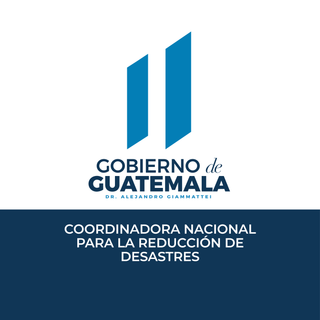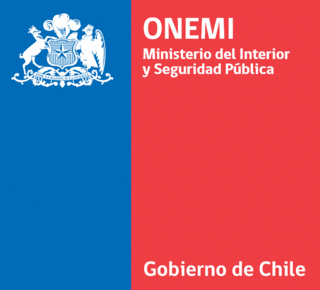
The Federal Emergency Management Agency (FEMA) is an agency of the United States Department of Homeland Security (DHS), initially created under President Jimmy Carter by Presidential Reorganization Plan No. 3 of 1978 and implemented by two Executive Orders on April 1, 1979. The agency's primary purpose is to coordinate the response to a disaster that has occurred in the United States and that overwhelms the resources of local and state authorities. The governor of the state in which the disaster occurs must declare a state of emergency and formally request from the President that FEMA and the federal government respond to the disaster. The only exception to the state's gubernatorial declaration requirement occurs when an emergency or disaster takes place on federal property or to a federal asset—for example, the 1995 bombing of the Alfred P. Murrah Federal Building in Oklahoma City, Oklahoma, or the Space Shuttle Columbia in the 2003 return-flight disaster.

Emergency management is a science and a system charged with creating the framework within which communities reduce vulnerability to hazards and cope with disasters. Emergency management, despite its name, does not actually focus on the management of emergencies; emergency management or disaster management can be understood as minor events with limited impacts and are managed through the day-to-day functions of a community. Instead, emergency management focuses on the management of disasters, which are events that produce more impacts than a community can handle on its own. The management of disasters tends to require some combination of activity from individuals and households, organizations, local, and/or higher levels of government. Although many different terminologies exist globally, the activities of emergency management can be generally categorized into preparedness, response, mitigation, and recovery, although other terms such as disaster risk reduction and prevention are also common. The outcome of emergency management is to prevent disasters and where this is not possible, to reduce their harmful impacts.

The Robert T. Stafford Disaster Relief and Emergency Assistance Act is a 1988 United States federal law designed to bring an orderly and systematic means of federal natural disaster assistance for state and local governments in carrying out their responsibilities to aid citizens. Congress's intention was to encourage states and localities to develop comprehensive disaster preparedness plans, prepare for better intergovernmental coordination in the face of a disaster, encourage the use of insurance coverage, and provide federal assistance programs for losses due to a disaster.

The Mexican Secretariat of the Interior is the public department concerned with the country's domestic affairs, the presenting of the president's bills to Congress, their publication in the Official Journal of the Federation, and certain issues of national security. The country's principal intelligence agency, CISEN, is directly answerable to the Secretary of the Interior. The Secretary is a member of the president's Cabinet and is, given the constitutional implications of the post, the most important cabinet member. Additionally, in case of both temporary and absolute absences of the president, the Secretary of the Interior assumes the president's executive powers provisionally. The Office is practically equivalent to Ministries of the Interior in most other countries and is occasionally translated to English as Ministry, Secretariat or Department of the Interior.

The Bureau for Emergency Management and Disaster Administration —Spanish: Negociado para el Manejo de Emergencias y Administración de Desastres— is the agency of the executive branch of the government of Puerto Rico that oversees all emergency activities that occur in Puerto Rico. Its mission is to coordinate all the resources of the government of Puerto Rico in order to administer all the phases of emergency management in the case of a natural or technological disaster while preventing and minimizing all damage to life and property. It also coordinates similar functions with the federal government of the United States and foreign countries, as well as offering help to and cooperating with the private sector.

Nicaragua is a country in Central America with constitutional democracy with executive, legislative, judicial, and electoral branches of government. The President of Nicaragua is both head of state and head of government. Executive power is exercised by the government.
The Oklahoma Emergency Management Act of 2003 is an Oklahoma state law that replaced the Oklahoma Civil Defense and Emergency Resources Management Act of 1967 as the primary state law detailing emergency management in Oklahoma. The Emergency Management Act and the Catastrophic Health Emergency Powers Act together form the primary state laws regarding emergency and disastrous situations that may occur in the state.

Almost all of Uruguay has a humid subtropical climate. It is fairly uniform nationwide, since the country is located entirely within the temperate zone. Seasonal variations do exist, but extremes in temperature are rare. As would be expected by its abundance of water, high humidity and fog are common. The absence of mountains and other weather barriers makes all locations vulnerable to high winds and rapid changes in weather as fronts or storms sweep across the country.
The water resources management system in Uruguay has been influenced by the general sense of water as an abundant resource in the country. Average annual rainfall is 1,182 mm, representing a contribution of 210 km3 annually throughout its territory. In 2002, the per capita renewable water resources was 41,065 cubic meters, way above the world average 8,467 m3 in 2006. Uruguay also shares one of the largest groundwater reserves in the world, the Guarani Aquifer, with Brazil, Argentina, Paraguay. The Guarani aquifer covers 1,200,000 square kilometers and has a storage capacity of 40,000 km3.

The National Coordination for Disaster Reduction is a Guatemalan government organization created to prevent disasters or reduce their impact on society, and coordinate disaster relief efforts. Day-to-day management is carried out by the Executive Secretary of CONRED, also known as SE-CONRED. The current Executive Secretary of CONRED is Oscar Estuardo Cossío Cámara, a former Vice Minister of Defense and former general of the Guatemalan Army.

ONEMI or National Office of Emergency of the Interior Ministry was a Chilean government agency dedicated to the prevention, organization, coordination and information relative to natural disasters. After the 1960 Valdivia earthquake a committee was formed to solve problems caused by the earthquake. However, this committee was not dissolved afterwards and in 1974, it acquired by law independent status as governmental office.

Energy in Uruguay describes energy and electricity production, consumption and import in Uruguay. As part of climate mitigation measures and an energy transformation, Uruguay has converted over 98% of its electrical grid to sustainable energy sources. Fossil fuels are primarily imported into Uruguay for transportation, industrial uses and applications like domestic cooking. Four hydroelectric dams provide much of the country's energy supply.

The Spanish National Health System is the agglomeration of public healthcare services that has existed in Spain since it was established through and structured by the Ley General de Sanidad of 1986. Management of these services has been progressively transferred to the distinct autonomous communities of Spain, while some continue to be operated by the National Institute of Health Management, part of the Ministry of Health and Social Policy. The activity of these services is harmonized by the Interterritorial Council of the Spanish National Health Service in order to give cohesion to the system and to guarantee the rights of citizens throughout Spain.

The National Civil Defence System for Disaster Prevention and Mitigation of El Salvador, commonly known as "Protección Civil", is an entity created to prevent disasters or reduce their impact on society, and coordinate disaster relief efforts.
The Uruguayan savanna ecoregion used to be covered by grasslands, palm savannas, and gallery forests along the Uruguay, Negro, Yaguarí, Queguay, and Tacuarembó rivers. Unfortunately, agriculture and cattle ranching have heavily altered these natural communities. The savannas are critically endangered because there are few small isolated patches of intact habitat remaining. The whole ecoregion has been severely altered by cattle ranching, one of the main pillars of the national economy in Uruguay. About 80% of Uruguayan territory is used for cattle ranching on natural and artificial savannas.

The National Police of Uruguay is a national and institutional police force of the Republic of Uruguay, founded on December 18, 1829. It depends on the Executive Power through the Ministry of the Interior. Its main mission is to protect the free exercise of rights and freedoms, guarantee order, internal security, ensure compliance with the laws, assist and protect people, prevent the commission of crimes, ensure security in public places and events, repress behaviors that constitute crimes and misdemeanors.
The Directorate-General for Civil Protection and Emergencies (DGPCE) is a component of the Spanish Department of the Interior responsible for promoting, planning and coordinating the various actors involved in the field of civil defence, both national and international.
The Honorary Scientific Advisory Group was an advisory committee created by President Luis Lacalle Pou in April 2020, as a support group on the wake of the COVID-19 pandemic in Uruguay.

The Government Delegation for the National Plan on Drugs is the executive body of the Spanish Ministry of Health, attached to the Secretary of State for Health, which is responsible for the management, promotion, general coordination and supervision of the services in charge of updating and executing the National Plan on Drugs.

The National Institute of Civil Defence, created in 1972 as the National System of Civil Defence, is a public organisation dependent on the Ministry of Defence of Peru.
















